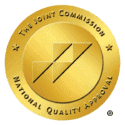Chroming and this Dangerous Trend
You may not have heard about chroming, but your children probably have. This dangerous behavior isn’t new, but it has recently received renewed attention through social media. When you understand what chroming looks like and why it can be so harmful, you’ll be better prepared to keep your loved ones safe.
What is Chroming?
Chroming is a form of inhalant abuse. Other common terms for this practice include huffing and bagging.

The term “chroming” originally referred to inhaling fumes from aerosol paints that had been sprayed into a paper bag. People who engage in this behavior usually use metallic spray paint. When they hold the bag to their mouth and nose in order to inhale the fumes, they often end up with a paint ring where the bag came into contact with their face. That effect let to the practice being called chroming.
Through the years, chroming has evolved in to a more general term. Today, it can be used to describe the intentional inhalation of several dangerous substances. In addition to spray paints, chroming can also involve:
- Household solvents
- Gasoline
- Kerosene
- Paint thinner
- Certain types of glue
- Nail polish remover
- Hairspray
Chroming is most popular among adolescents and teens. This may be due to the fact that the practice incorporates many common household items, which may be easier for young people to acquire than other recreational substances.
About The Chroming Challenge on Social Media
Videos on Tik-Tok and other social media platforms can make chroming look like fun, without acknowledging its many dangers. For some young people, this misinformation can be fatal:
- In March 2024, an 11-year-old boy from the UK died of what authorities believe was cardiac arrest after engaging in chroming. Members of his family reported that the boy had learned about chroming from videos on Tik-Tok.
- This was unfortunately not the first death that has been tied to chroming and social media. In March 2023, a 13-year-old incurred irreparable brain damage and later died after engaging in this behavior at a sleepover party.
As evidenced by previous trends such as the Benadryl challenge or the choking game, teens can quickly become swept up in hazardous fads like chroming. Some may be fueled by the desire to gain social media attention, while others may simply want to feel like they are fitting in with their online peers.
Regardless of what prompts a young person to try chroming, the results – as we will discuss in the next section – can range from upsetting to devastating.
Dangers of Chroming
Chroming is extremely dangerous. People who engage in this behavior put themselves at risk for many harmful effects, some of which can be severe and irreversible.
The long list of possible chroming-related damage includes:
- Nausea and vomiting
- Confusion and disorientation
- Problems with coordination and muscle control
- Muscle weakness
- Respiratory distress
- Cardiovascular damage
- Liver and kidney damage
- Delayed responsiveness
- Cognitive impairments
- Brain damage
- Hallucinations and delusions
- Psychosis
- Seizure
- Death
How to Talk to Your Kids About Chroming
With such a significant amount of incorrect and intentionally misleading information available to young people online, parents need to be sure their children understand the very real risks that chroming poses.
5 Tips on Having a Productive Conversation with Your Children about Chroming:
- Be honest: If your children spend much time online, there’s a decent chance that they’ve already heard of chroming. They may even know peers who have engaged in this behavior. So you need to be honest about why some people get involved with chroming and realistic about the dangers they face.
- Take an age-appropriate approach: For younger children, it may be enough to say that chroming is dangerous, they should never do it, and they should find a responsible adult if someone tries to convince them to try it.
- Discuss, don’t lecture: Lectures or threats can cause your children to tune you out or immediately become defensive. Instead, make your conversation about chroming a true discussion. Ask them what they’ve heard about this practice, correct any misinformation, and help them brainstorm ways to say “no” if someone asks them to try chroming.
- Focus on education, not intimidation: We’ve touched on this in other tips, but it bears repeating. Threats, ultimatums, or efforts to intimidate your children into staying away from chroming can easily backfire. Instead, help them understand the dangers of this behavior and provide practical guidance on how to avoid it.
- Plan to revisit the topic: One conversation about chroming can be a great start. But it’s just that: a start. Be prepared to have many discussions about chroming, other types of substance abuse, and other potential threats to your children’s well-being.
Contact Our Substance Abuse Treatment Center Today
Chroming can lead to a type of addiction known as inhalant use disorder. If you or someone that you care about has become trapped in the downward spiral of compulsive inhalant abuse, please know that help is available at Sanctuary Treatment Center.
When you choose our addiction rehab in Los Angeles, you will find a safe and welcoming place where you or your loved one can receive personalized services from a team of skilled and experienced professionals.
Our continuum of care includes detoxification, inpatient treatment, and outpatient programming. We work closely with each patient and, when appropriate, their families to understand the full scope of their needs, so that we can provide them with the most effective types of treatment.
To learn more about our programs and services, or to schedule a free assessment, please visit our Contact page or call us today.





